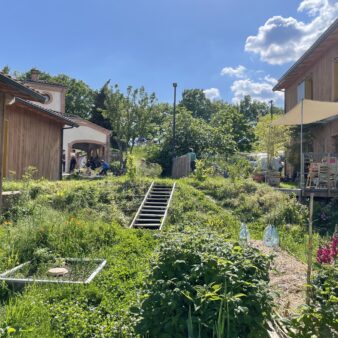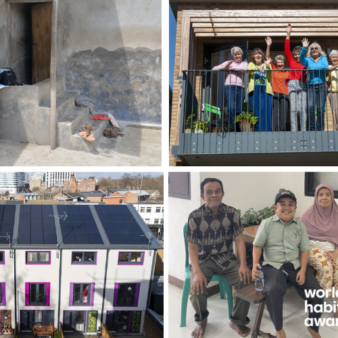
The UK Royal Geographical Society (with IBG) 21st Century Challenges: Policy Forum discussion on Monday evening, 20 June, saw four different, engaging perspectives presented by the panellists. However, the solutions presented had an underlying assumption that the only route to success would be to return to the status quo; i.e. to provide new housing so that owner occupation could continue as the main housing tenure for most people. Whether the status quo is a viable option for the future or not I don’t know for sure, but I think there’s a fair bet that it isn’t. This raises the question of what else can be to solve London’s housing crisis? What are the alternative visions for the provision of housing that is ‘affordable, timely and sustainable to meet the needs of London’s workforce now and in the future’, as the Policy Forum sought to show? Here I offer a few suggestions of how London’s housing offered could be diversified:
- Property guardianship: 1% of the Dutch population are property guardians. This alternative form of occupation involves people living in otherwise empty buildings at low cost in order to protect the building from damage or squatters. There is a property guardian market in London led by the likes of Camelot Property, Ad Hoc and Dot Dot Dot. The market in Holland is probably ten years ahead of the UK and it indicates that there is considerably more scope for expansion. There may be 50,000 empty houses in London, but the amount of empty non-residential buildings could possibly house a quarter of a million people, so the scope for property guardians appears to be at least as great as in Holland
- Temporarily using empty open space: There is considerable scope for temporarily using empty open space. There is an innovative project in Lewisham on the old Ladywell baths plot that uses prefabricated pods as temporary low cost homes. If this idea was scaled up the cost benefit would become very attractive. Y-Cube in South London and Container City in Docklands provide other examples of similar thinking.
- Housing cooperatives: 25% of the Uruguayan population live in housing cooperatives. So too do a significant proportion of the population Berlin. Housing cooperatives had their heyday in the 1970s but have since become an unfashionable tenure in London. There are 25,000 cooperative tenants in the UK. The problem is no new cooperatives have been developed in London for years. There are however exciting new developments such as Lilac in Leeds which use cooperative principles to develop low cost housing communally. The wider community led housing movement has scope for revival filling the space for locally driven housing that was vacated when housing associations turned their attention to other markets.
- Co-housing: Cohousing is a formalised way of households sharing facilities. It can be far more space and cost efficient than self-contained flats. An interesting new extension of this principle is the commercialised co-living blocks. One has recently been opened in Old Oak.
These examples are not the whole answer to meeting housing need, but this brings me to my last point. There is a tendency in housing to look for a magic bullet. Everybody it seems is looking for it: but the truth is it doesn’t exist. There is no one thing that will solve everything. The problem is that the search for the magic bullet means that anything that works but doesn’t solve the whole problem gets dismissed. Building on brownfield sites, bringing empty homes into use and densifying council estates do not on their own have enough capacity, but making use of these approaches together gives the potential for tens, probably hundreds of thousands of homes. Add a few more solutions, give people the permission to go and develop them and the answer doesn’t seem so impossible.




Join the discussion